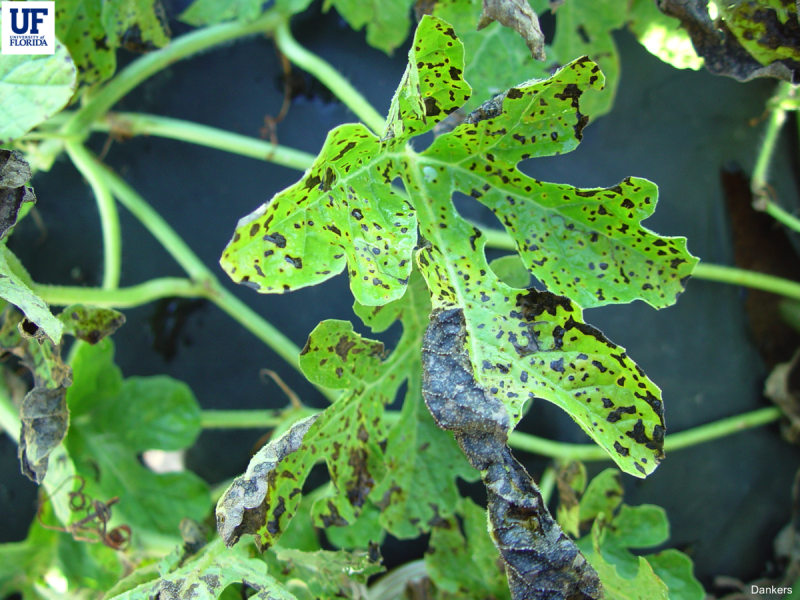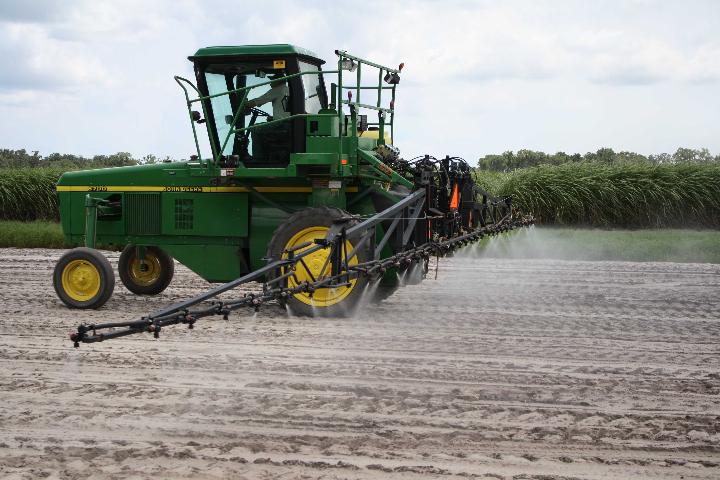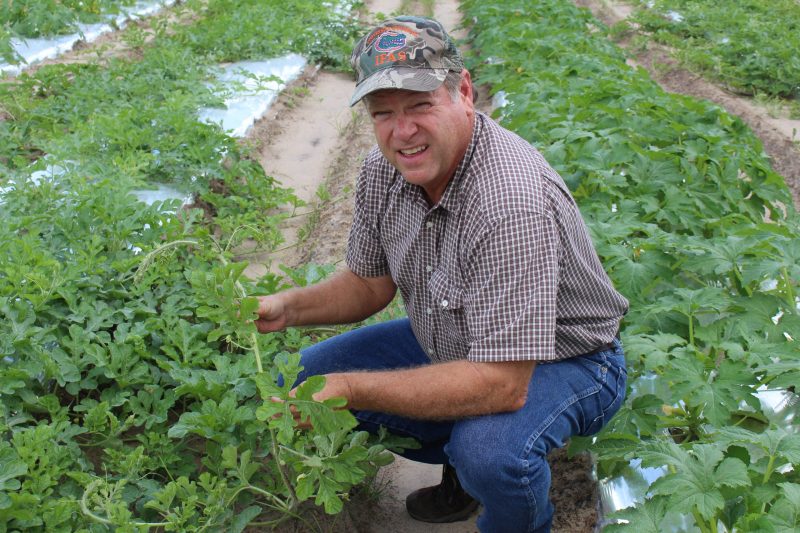Bob Hochmuth, Regional Specialized Extension Agent – Vegetable Crops, with input from Suwannee Valley Extension Agents: Mark Warren (Levy), Tyler Pittman (Gilchrist), Tatiana Sanchez (Alachua), Luke Harlow (Bradford), Dan Fenneman (Madison), Keith Wynn (Hamilton), Emily Beach (Lafayette), Jim Devalerio (Union), De’Anthony Price (Jefferson), Raymond Balaguer(Suwannee), Kevin Athearn (RSA-Agri- business), Shivendra Kumar (RSA-Agronomic Crops), and Jay Capasso (RSA- Water Resources).
Determining Disease and Pest Priorities
Well, we can safely now say we pretty well have detected most of the major diseases of concern in watermelon this year. In alphabetical order, we can confirm at least one case of:
-
Alternaria leaf spot
-
Anthracnose
-
Bacterial Leaf Spot
-
Downy Mildew
-
Gummy Stem Blight
-
Powdery Mildew
Now, that sounds pretty bad, but as I look at fields throughout the region, I see many fields that are still relatively clean from any major disease outbreak. So, how do we assess this type of situation moving forward? I urge you to focus first on the disease that can move throughout the region and your fields most quickly, and that disease is downy mildew. I feel like it will be necessary to use either Orondis Ultra or Ranman in your weekly rotation with other fungicides. It is also important to note, overhead irrigation greatly increases the risk of downy. This is certainly the case again this year in both Florida and Georgia.

Downy mildew symptoms on watermelon tends to be distinct compared to other cucurbits. The symptom start as small yellow spots that become dark and necrotic. Credit – Dankers, UF/IFAS
–
If you have any of the following diseases diagnosed in your field, Alternaria, Anthracnose, Bacterial Leaf Spot, or Gummy Stem Blight, you have been provided specific spray recommendations. In the cases of these four diseases, the fields with infection are certainly significant and are serious in their own right, but they are not as much of a region-wide threat as downy mildew.
The final disease of note is powdery mildew. Powdery is in the region but has not been seen as a serious threat yet in most of the region. The low pressure is very likely due to the early detection of this disease and farmers initiating a preventative program based on these alerts. I would not stop adding something in for powdery mildew, but you may be able to reduce the intensity of weekly applications, if you have not seen powdery in your fields. Final thought is to know what is in “your fields” and react accordingly, but prepare for downy mildew.
Keep up with your rindworm preventative programs as well.
–
Spray Cocktails
A final spray caution as we move forward into harvest season and as temperatures get much higher. Every year, I see a few situations where a multiple ingredient “cocktail of chemicals” causes a near disaster from spray burn, and this year was no exception, as I have seen a handful of these situations over the last two weeks. I recommend that you stick to the main ingredients of fungicides and insecticides. Be careful when you add fertilizers, growth enhancers, micronutrient mixes, etc. to an already “hot mix” of chemicals. Sometimes when we add 5 or 6 materials to the same tank, we are asking for trouble, especially if spraying on a hot day. I would guess I am not the only one who, as a “younger person”, wished they had not consumed some of those special multiple ingredient cocktails. The next day I may have wondered which ingredient was the one that made me pay (LOL)!!!! I learned my lesson and hope you will too. It is the same principle here with too many ingredients in our spray tanks. I would weigh the importance versus the risk of any added ingredients, and also ask if it has to be sprayed on or could be injected. It is very possible individual ingredients will cause no problem if sprayed alone, but when added to a list of 5-6 other ingredients, it may become the culprit of increasing the likelihood of burn to the crop. Keep the spray mixes as simple as possible. –
–
Fertigation Autopilot After Harvests Start
As we start harvesting, we will stop taking petiole sap samples as the process of pulling good leaf samples becomes difficult and leaf tissue sampling in general is less useful. However, over the years, I have found most fields can be carried with nitrogen and potash applications at a rate of about 1.5, and no more than 2.0 lbs per acre per day. When you get to 7-10 days from the very final harvest, you should stop fertigations all together as they will not be needed that close to the final harvest.

Bob Hochmuth, UF/IFAS Regional Specialized Extension Agent, evaluating nutrient status in a Suwannee Valley watermelon grower’s field.
–
If you know someone who wants to be added to this weekly notice, contact your extension agent or Mark Warren (352-949-8288) if you want to be added to the regional watermelon group text app.
We have initiated a more formal way to support our watermelon growers with a rapid diagnostics system through Suwannee Valley Regional and County Extension Agents. This industry-funded program allows Extension Agents to submit and pay for watermelon grower’s plant disease and other diagnostic samples. This SV Rapid Diagnostic Watermelon Program will help us to get quicker diagnostic results, helping to give early alerts to everyone, and not have to charge the growers directly. Plant disease samples are typically $40 and leaf tissue analyses are typically $20. We are currently extending our solicitation of those industry reps interested in sponsoring this effort. The past year’s sponsorships have ranged from $200 to $2,000 per company. Sponsors will be recognized every week beginning this week. Those interested in being added as a sponsor can contact Bob Hochmuth at bobhoch@ufl.edu or 386-288-6301.
Current 2024 sponsors of our Watermelon Rapid Diagnostics Program include Valdosta Plant Company, Mayo Ag Services, Gowan USA, Harrell’s Fertilizer, Triest Ag, Syngenta Crop Protection, WestRock Paper Company, Orbia Netafim, and Super Sweet Farms. Others are still welcome to join.
- 2024 Watermelon Season Wrap Up - June 21, 2024
- Weekly Watermelon Update – June 3 - June 7, 2024
- Weekly Watermelon Update #10 – May 20 - May 24, 2024
